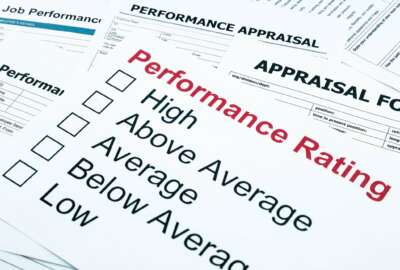
Navy starts small with pay for performance pilot
The Navy is offer pay for performance bonuses to seven surface warfare positions.
Best listening experience is on Chrome, Firefox or Safari. Subscribe to Federal Drive’s daily audio interviews on Apple Podcasts or PodcastOne.
The Navy is experimenting with a way to reward sailors for good work by putting extra money in their pockets when they reenlist.
This year the Navy rolled out its pay for performance pilot program, which will give some sailors an extra 0.5 multiple —colloquially called a “kicker”— to their reenlistment bonus.
The pilot is currently only available to seven surface warfare ratings, but the Navy hopes to expand the program to other needed occupations within the service.
The Navy gives selective reenlistment bonuses to entice sailors who have high-demand talent to stay in the service longer. With low unemployment and high demand for certain skills, the Navy is finding it needs to work harder to keep those people.
“There has not been a differentiation within a skill set to say ‘Scott has worked harder than John,’ so if we want Scott to stick around maybe we should give him just a little bit more,” Rear Adm. John Nowell, the Navy’s director of military personnel plans and policy told Federal News Network. “We still want to retain as many folks in those skill sets as possible, but we think we will get the true talent and keep the talent if we can incentivize them a little more.”
The “little” incentive can really add up.
Bonuses are calculated by multiplying sailors’ monthly pay by the number of years reenlisted and then multiplying that by the kicker — which is determined by how long a sailor has been serving, specific skills and his or her occupational specialty.
For example, an E-5 reenlisting for four years and moving from a 1.0 kicker to a 1.5 kicker would get a $16,800 bonus as opposed to an $11,000 bonus.
Sailors will get half of the payment up front and the rest in yearly increments.
To be eligible for the pay for performance program, sailors need to have received a recommendation for early promotion on two of their three most recent performance evaluations. They also must not have any non-judicial punishments in the last three years and must have passed all physical fitness assessments in the last three years.
Why do this now?
The military as a whole is realizing it needs to change its talent management system to better fit the 21st century.
There is a massive talent grab as the United States moves once again toward near-peer competition with China and Russia and the private sector looks for the top minds in the world.
The Navy “needs to be more talented,” Nowell said. “We have to be able to attract the best. Right now, unemployment is the lowest it’s been in the last 50 years. We know that the skill sets that we produce in the Navy are highly sought after in the civilian sector.”
Nowell said the Navy needs to be able to attract those people and keep them in the service.
The people the Navy is looking for are continual learners.
“We have to find folks [who] can be adaptable and flexible and who are used to learning in different ways,” Nowell said. “They are not afraid in the digital environment and they are used to going to things like YouTube to get answers to all kinds of questions. We are going to leverage that as we help build them and keep them adaptable and flexible.”
The future of pay for performance
While the pilot program is only available to some ratings, the Navy wants to expand it in the future. To do that though, it needs to make evaluations easier and more accessible.
The fitness reporting system hasn’t been updated since 1996.
“We’ve lived with the system we have because folks have learned to work with it. It’s sort of the evil we know,” Vice Adm. Robert Burke, the chief of naval personnel, said in 2017. “But we need to get to some objective measures of performance with enough fidelity that we could do things like pay-for-performance.”
Nowell said the current evaluation system is more based on tenure and longevity.
“What we want is a merit-based system where it’s a consistent standards-based approach across the Navy,” Nowell said. “The behavioral science has gone a long way since we last updated our performance and evaluation system. We are bringing in behavioral science to get a better read against a common standard for commanding officers at where somebody sits in respect to their performance.”
The Navy already started changing some of its evaluation tactics. For example, it’s ending some forced distribution, which restricts the number of promotion recommendations.
The service also released a new app for sailors to look at what training, certifications and licenses they’ve earned and completed.
Nowell said the Navy wants to move most of its personnel processes to easy app access.
Copyright © 2025 Federal News Network. All rights reserved. This website is not intended for users located within the European Economic Area.
Scott Maucione is a defense reporter for Federal News Network and reports on human capital, workforce and the Defense Department at-large.
Follow @smaucioneWFED





